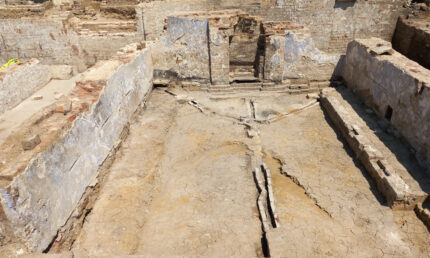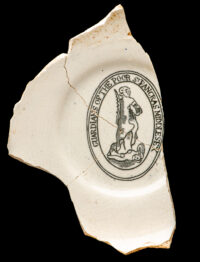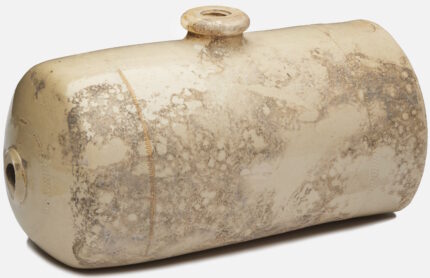
Since early this year, archaeologists from the Museum of London Archaeology (MOLA) have been excavating the two-acre site before construction of a new state-of-the-art ophthalmology center. It is part of a five-acre site that includes St. Pancras Hospital, originally St. Pancras Workhouse, named after the neighboring Church of St. Pancras in what was then a suburb of London.
The workhouse was built in 1809 to accommodate 500 indigent people, often families. An infirmary was added three years later, and by the middle of the 19th century, the population of the workhouse had increased more than threefold, fluctuating between 1,500 and 1,900 at its peak. Additions to the workhouse and infirmary were built to keep up with the number of residents. The workhouse was finally shut down in 1929 and its surviving buildings folded into the hospital.
As the name suggests, the idea of the workhouse was that the state would provide relief to the poverty-stricken in the form of a roof over their heads and enough food to survive in exchange for their unpaid labor. Church parishes were part of the administration of relief initially and there was some flexibility in the treatment of indigent families and individuals. That came to an end with the 1834 Poor Law.

The area currently being investigated was known to have had some workhouse structures, but they did not survive. They were damaged in the Blitz and demolished after World War II. The MOLA team has been excavating the site where these buildings once stood and expected to find their foundations, ground floors and associated artifacts.
The new evidence suggests the St Pancras workhouse may have started out with a greater interest in support than deterrence. Williams said: “While the facilities are spartan, the inmates were not there to be punished … There were gardens, an infirmary and nursery. These acknowledge their needs as much as the heated rooms, or the pale blue paint on the walls.”
The finds include institutional crockery – with plates bearing an image of St Pancras and the words “Guardians of the Poor St Pancras Middlesex” – and the remains of a bone toothbrush with horsehair bristles, suggesting the importance of personal hygiene.

A woman, during the intense frost, was met in the evening carrying home her weekly quartern loaf from Saint Pancras Workhouse. (Was it not there that guardians of the poor, not long ago, excited wrath among parishioners by putting themselves on the parish for hot dinners at their weekly meetings?). The woman was met shivering with cold; she had been waiting for her dole, from twelve o’clock till half-past four, in a room with a stone floor, which she declared had not been warmed in any way. “I could have stood it better,” she said, “if there hadn’t been such a dreadful could draught from them wentilating places all round the floor.” The “ventilators” out of which the cold blast came, were the pipes of the disused warming apparatus. If was desirable to use that apparatus for the benefit of paupers, even when the thermometer wavered between freezing and zero. […]
A vestryman is asked whether this woman’s story, not the first or the tenth of its kind, could be true ; were the poor really exposed to so much suffering when they came for relief? “Yes,” he replied, ” and wilfully. I have tried to effect a change, but only three would side with me. The rest thought that if the poor creatures were made too comfortable, more would come.” We take our illustration from St. Pancras simply because it is natural for anybody to look to St. Pancras of evil repute, when he wishes to lay his hand on any sort of abuse incident to the administration of the Poor Law. But the illustration serves for the whole system, which makes workhouses discouragements to poverty, and gaols encouragements to crime.
* This article was originally published here








No comments:
Post a Comment